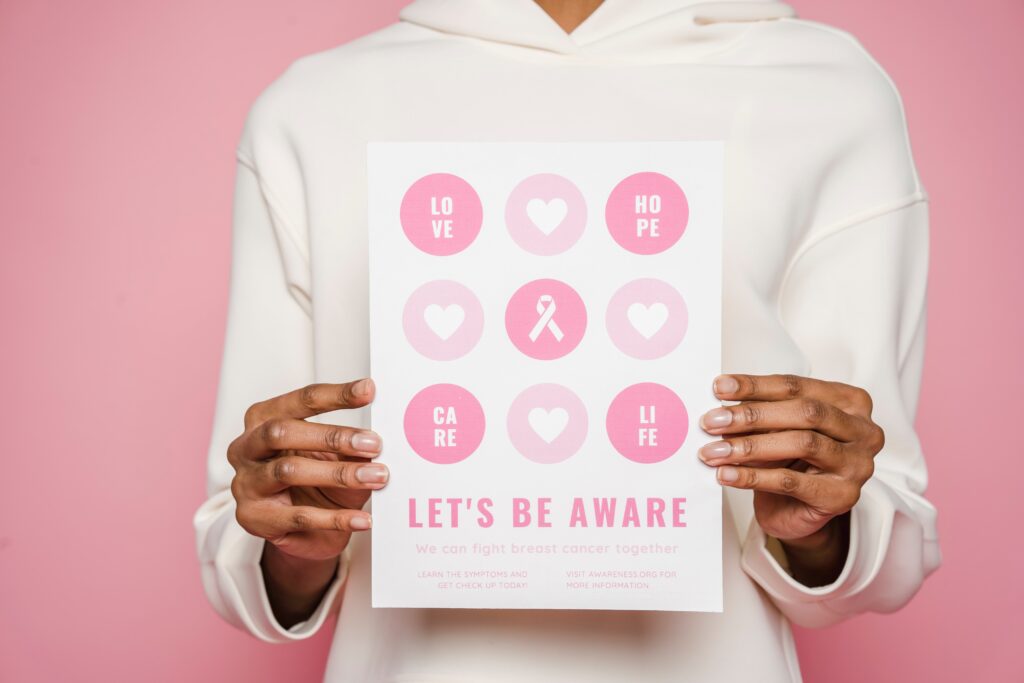Breast cancer is a significant health concern that affects millions of individuals worldwide. While it can impact both men and women, it is more commonly diagnosed in women.
In this comprehensive guide, we will explore the risk factors associated with breast cancer, signs and symptoms to watch out for, early detection methods, treatment options, and how to find support during this challenging journey.
Feel Her Silicone Breast Cancer Prosthesis Triangular Bra Pad 40% OFF

Also Read: How To Manage Menopause and Diabetes At Home?
Risk Factors for Breast Cancer:
Understanding the risk factors for breast cancer is essential for early prevention and detection. These factors include:
- Age: The risk increases with age, with most cases diagnosed in women over 50.
- Family History: A family history of breast cancer, especially in first-degree relatives, can increase your risk.
- Genetics: Inherited mutations in BRCA1, BRCA2, and other genes can significantly elevate the risk.
- Gender: Women are at a higher risk than men.
- Hormone Replacement Therapy: Long-term use of certain hormone therapies can increase the risk.
- Radiation Exposure: Prior exposure to chest radiation may raise the risk.
- Personal History: Previous breast cancer or certain non-cancerous breast conditions may increase the likelihood of future breast cancer.
Signs and Symptoms:
Recognizing the signs and symptoms is crucial for early detection. Common indicators include:
- Lump in the Breast: The most common symptom is a painless lump or thickening in the breast or underarm.
- Change in Breast Size or Shape: Unexplained changes in breast size or shape should be evaluated.
- Nipple Changes: Look for nipple discharge, inversion, or changes in appearance.
- Skin Changes: Redness, dimpling, or puckering of the breast skin may indicate a problem.
- Breast Pain: While breast pain is not usually a symptom of cancer, it should still be checked by a healthcare professional if persistent.
Early Detection Methods:
Early detection significantly improves the chances of successful treatment. Here are essential methods for early detection:
- Breast Self-Exams: Regular self-exams help you become familiar with your breast tissue and detect any changes.
- Clinical Breast Exams: Your healthcare provider can conduct a clinical breast exam during your regular check-ups.
- Mammograms: These X-ray images of the breast are vital for detecting breast cancer at an early stage. Women aged 40 and older should get regular mammograms.
Treatment Options:
Treatment varies based on the stage, type, and individual factors. Common treatment options include:
- Surgery: Removal of the tumor (lumpectomy) or the entire breast (mastectomy).
- Radiation Therapy: The use of high-energy rays to kill cancer cells.
- Chemotherapy: Medications that target and kill cancer cells throughout the body.
- Hormone Therapy: For hormone receptor-positive breast cancers, medications can block hormones that fuel cancer growth.
- Targeted Therapy: Drugs that target specific proteins involved in cancer growth.
- Immunotherapy: Boosting the immune system to fight cancer cells.
Treatment plans are personalized, and your healthcare team will help determine the best approach for your situation.
Finding Support:
A breast cancer diagnosis can be overwhelming, and finding support is crucial for emotional and practical assistance:
- Support Groups: Joining support groups, either in person or online, can connect you with others who understand your journey.
- Counseling: Seeking the guidance of a mental health professional can help you navigate the emotional challenges.
- Family and Friends: Lean on your loved ones for emotional support and assistance with daily tasks.
- Patient Advocacy Organizations: Many organizations provide resources, information, and support for breast cancer patients and their families.
Conclusion:
Breast cancer is a complex disease that requires a multifaceted approach to understanding and managing it. By being aware of the risk factors, recognizing signs and symptoms, actively participating in early detection methods, exploring various treatment options, and seeking support, individuals can face breast cancer with resilience and hope. Remember, early detection can save lives, so prioritize your breast health and consult with healthcare professionals for guidance on prevention and early detection strategies.
FAQ – Frequently Asked Questions:
Q1: Can men get breast cancer? Yes, although it’s less common, men can develop breast cancer. It’s essential for both men and women to be aware of the signs and symptoms.
Q2: How often should I perform a breast self-exam? Perform a breast self-exam monthly to become familiar with your breast tissue and detect any changes. Consult your healthcare provider if you notice any abnormalities.
Q3: Are all breast lumps cancerous? No, not all lumps are cancerous. Many breast lumps are benign (non-cancerous). However, any new lump or change should be evaluated by a healthcare professional.
Q4: What is a mammogram, and when should I get one? A mammogram is an X-ray of the breast used for early detection. Women aged 40 and older should get regular mammograms as recommended by their healthcare provider.
Q5: What are the treatment options for breast cancer? Treatment options vary based on the type and stage of breast cancer. They may include surgery, radiation therapy, chemotherapy, hormone therapy, targeted therapy, or immunotherapy.
